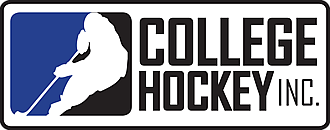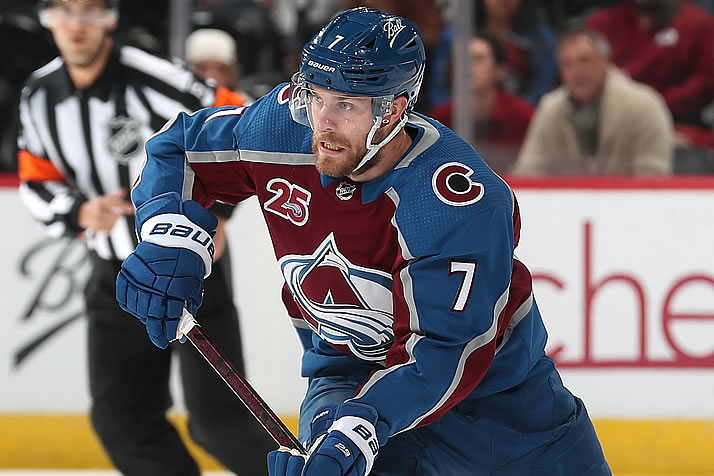


By Sean Hogan, Jayson Hajdu and Mike Snee
NOTE: This article was updated November 28, 2023
The development of an aspiring young hockey player rarely occurs in a straight line. Similarly, a player’s development path can sometimes be as jagged as the Rocky Mountains. The latter is not the case in British Columbia, however, where the BCHL has emerged as a tried-and-true stepping stone for British Columbians on their way to NCAA Division I men’s hockey.
In 2023-24 alone, a whopping 322 BCHL alumni are playing NCAA Division I men’s hockey. Twenty of them are NHL draft picks. Twelve of them serve as team captain. British Columbia natives like Denver’s Massimo Rizzo (Burnaby), who entered December leading the NCAA in scoring, UConn’s Matthew Wood (Nanaimo), Nashville’s first-round pick in 2023, and Quinnipiac’s Jayden Lee, a national champion in 2023, all honed their skills in the BCHL.
Further, each of those players opted to stay within their home province to play their minor hockey prior to arriving in the BCHL. Their paths mirrored that of Kent Johnson, a Port Moody native who played his minor hockey in B.C., matriculated to the BCHL, and earned a scholarship to the University of Michigan.
Following his freshman year with the Wolverines, Columbus made Johnson the fifth overall pick in the NHL Draft. Johnson finished fifth in the NHL’s rookie scoring race in 2022-23.
The path from British Columbia to the NHL via the NCAA has been heavily traversed dating back decades, a trail blazed by the likes of Vancouver’s Paul Kariya and Pitt Meadows’ Brendan Morrison. Both captured the prestigious Hobey Baker Memorial Award as the top player in NCAA Division I men’s hockey – Kariya with Maine and Morrison with Michigan – on their way to NHL stardom.
That path is as reliable as it is well-worn.
How Does It Happen?
NCAA Division I men’s hockey rosters in 2023-24 feature 107 players from British Columbia, a total that trails only Ontario (186) and Alberta (108) among Canadian provinces. College Hockey Inc. tracked and studied the paths of those players, and several noteworthy themes revealed themselves:
The number of leagues does narrow as players reach adulthood. For example, the majority of 19- and 20-year-olds from British Columbia who are still playing junior hockey are doing so in the BCHL.
The Data: Hockey Before NCAA
The average commitment age of players from British Columbia was 19 years old. An overwhelming majority of those players – 96 percent of them – earned their commitments while playing in NCAA-eligible junior hockey leagues. In fact, 78 percent of them earned their commitment while in the BCHL.
Only seven of the 107 players studied earned their commitments while playing minor hockey.
Hockey players in British Columbia have numerous viable options en route to the NCAA. However, three themes bear repeating: 1) approximately one-fourth of the players studied are not playing junior hockey at age 17; 2); 96 percent of the players studied received their commitments while playing in NCAA-eligible junior hockey leagues; and 3); the majority of the players studied essentially played in three leagues – the BCHL, CSSHL and the BCEHL U18.
| Where they were playing when they earned their NCAA commitments: | |
| League | No. |
| BCHL | 83 |
| AJHL | 6 |
| Minor Hockey | 7 |
| NAHL | 3 |
| SJHL | 3 |
| USHS/Prep | 2 |
| CAHS | 1 |
| CIS | 1 |
| OJHL | 1 |
| Where they were playing at 17: | |
| League | No. |
| BCHL | 69 |
| CSSHL | 15 |
| BCEHL U18 | 13 |
| OTHER | 9 |
Case Study I: Devon Toews
Now a star defenseman for the Stanley Cup champion Colorado Avalanche, Devon Toews never left his home province on his way to the NCAA.
The Abbotsford native worked his way through the PCBHL, BCEHL and PIJHL before spending two seasons with the BCHL’s Surrey Eagles. During his rookie season with Surrey in 2011-12, Toews landed a commitment to ECAC powerhouse Quinnipiac University. One year later, he helped the Eagles win the BCHL’s Fred Page Cup and was named the Centennial Cup (formerly the RBC Cup) Top Defenseman.
“The Surrey Eagles gave me a chance, and the opportunity to go to college stuck out to me,” Toews told Vancouver’s Sportsnet 650 in 2020. “Having a degree to fall back on was very important, as a career in hockey doesn’t work out for everyone.”
Toews’ developmental trajectory continued upward once at Quinnipiac. He was selected in the fourth round of the NHL Draft by the New York Islanders following his freshman campaign in 2013-14. Two years later, Toews and the Bobcats played in the NCAA championship game.
In the book Sticks and Stones: How College Hockey Prepares You for Life by Russ Cohen and Adam Wodon, Toews reiterated that college hockey was his logical next step.
"…this culture of every day getting better, every day a new opportunity. The culture is seamless. The expectations never drift or vary. I brought those philosophies to the pros,” said Toews.
Fast-forward to the present, and Toews is now one of the top two-way defensemen in the NHL and a vital piece of a dynamic Avalanche squad.
Case Study II: Massimo Rizzo
Burnaby’s Massimo Rizzo enjoyed a dream freshman season at the University of Denver in 2021-22. He was an immediate contributor – never a given for a first-year player making his NCAA Division I debut – with 36 points in 38 games. The NCHC named him to the league’s all-rookie team.
He saved his biggest goal for last, potting an insurance tally late in the third period of the 2022 NCAA championship game to help deliver DU’s ninth national hockey crown. Two years later, he leads the nation in scoring at the time of this writing.
Rizzo’s path to college hockey glory is instructive.
Like Devon Toews, Rizzo never ventured beyond the provincial borders, playing his minor hockey in his hometown of Burnaby. In 2017-19, he played his first full season in the BCHL with Penticton. One year later, he was captain of the Vees and was selected by Carolina in the NHL Draft. Rizzo concluded his junior hockey career the following season with Coquitlam.
“I just thought throughout that process, what was going to be best for me and my long-term development? Getting exposure to different colleges and BCHL teams, I thought that was the right route for me,” Rizzo said of staying in British Columbia. “And then obviously going to play in the BCHL there’s a lot of great players coming out of there, and you saw that in the last couple of years with them coming into college and having success. That was intriguing for me.”
Despite not playing in any games in 2020-21 while with Chilliwack (to whom he had been traded from Coquitlam) in 2020-21 because of the COVID-19 pandemic, Rizzo was ready to step right into the DU lineup when he arrived on campus in the fall of 2021. Months later, he was hoisting a championship trophy for a storied collegiate hockey program.
“I couldn’t have asked for a better year,” Rizzo told The Denver Gazette following the 2022 title game. “Unbelievable group of guys and we had a ton of fun and obviously to have the season that we did was pretty spectacular.”
Our data is loud and clear: aspiring hockey players in British Columbia do not need to leave their home province to purse NCAA opportunities. That throughline – playing minor hockey at home, followed by the BCHL, on the way to college hockey -- among the vast majority of collegiate hockey players from British Columbia is instructive.
The BCHL is widely scouted by NCAA Division I coaches and is regarded by those same coaches as a vital proving ground for the players they are recruiting. British Columbians should take comfort knowing that they can play minor and junior hockey in their own province, perform well, and have opportunities to play college hockey.
NOTE: College Hockey Inc. has produced seven separate “paths” studies in recent years: a comprehensive examination in 2020, a goalie-specific analysis in 2021, in-depth looks at the states of Michigan and Minnesota, studies on the provinces Ontario and Alberta, and now this focus on the province of British Columbia.
